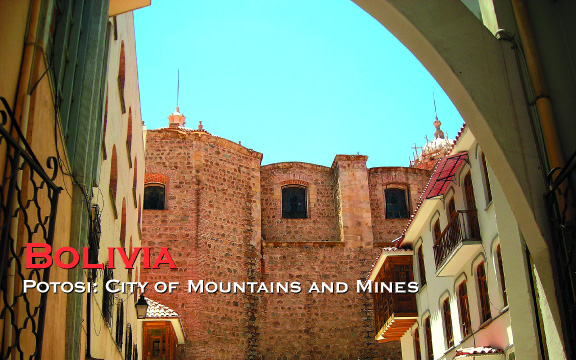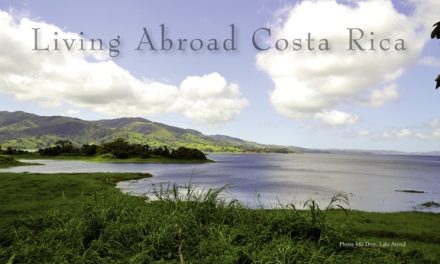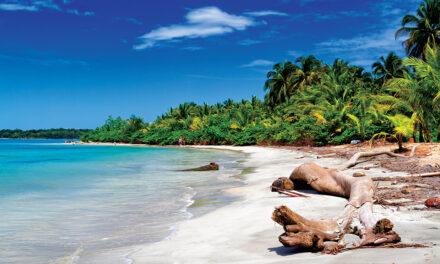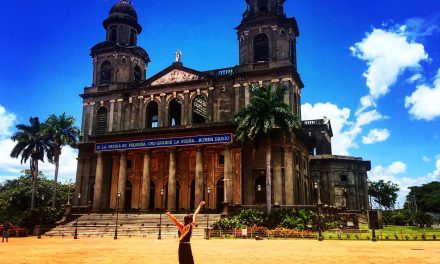Bolivia
Potosi: City of Mountains and Mines
Published in the Spring 2007 Issue of Canadian World Traveller
Text & Photos: Xerxes N. Marduk
Located in the heart of the Bolivian Andes at an altitude of 3,960 metres above sea level, Potosi lays claim to being the highest city in the world. Founded in 1546 by the Spanish, this loftily perched colonial outpost was the source of fabulous wealth for those lucky enough to own the rights to the mines in the surrounding silver-rich hills.
However, little has changed in the past 460 years for those who work the still-active mines, as I was soon to discover on my guided tour of one of them.

Landlocked Bolivia
My journey began in La Paz, the capital of Bolivia. Few realise that Bolivia is one of two landlocked countries in South America, the other being Paraguay. This little-known Spanish-speaking country shares its borders with Peru and Chile to the west, Brazil to the north, and Argentina and Paraguay to the south and southeast respectively.
Bolivia reminded me of the Old American Wild West. With its similar frontier ethic, Bolivia was a no-holds-barred, rough-and-tumble land, where early colonial settlers and adventurous prospectors lived or died by the choices they made and how fortune smiled or frowned upon them.
I was lucky to get a bus out of La Paz for my trip to Potosi, because miners’ strikes had sporadically closed the roads leading out of the capital during the previous week.
Midnight Arrival
Once on the open road, the bus grunted and groaned as it ground its way painfully along the deeply pitted main road heading south for a back-aching ten hours. When I arrived in Potosi it was midnight, and being a lone traveller, I had been warned to be vigilant when taking taxis at night in Bolivia. There had been reports of backpackers being held up at gunpoint and robbed of their possessions while taking taxis, so I was on my guard the moment I stepped off the bus.
Fortunately, I noticed an elderly Uruguayan couple getting off the bus and asked them if they wanted to share a taxi with me. The three of us got into a taxi that took us to our respective hotels. Mine was a hostel called Koala Backpackers, located right in the heart of Potosi.
One would think that with a name like Koala Backpackers, the establishment would be owned by Australians. But it was actually operated by local Bolivians who had obviously mastered the art of choosing catchy names to attract potential clientele to their establishments. In this case, that clientele predominantly consisted of Australian and British backpackers, since relatively few North Americans visit Bolivia.

A Trip to the Mines
In the morning, I signed a contract with the hostel that stated that if any accident befell me inside the mines, I couldn’t hold them responsible. By signing it, I acknowledged that even a fatality was a possibility.
I was already aware of the nonexistent safety precautions in the mines and the fact that I would be breathing in asbestos and sulphur gas with only a thin dust mask over my mouth and nose, but nothing could stop me from embarking on this once-in-a-lifetime experience.
Statistics confirmed that a boy who starts working in the mine at ten years of age has an average life expectancy of thirty years due to the toxic gases and the asbestos he will constantly breathe in over his working life. These chemicals were not going to hurt me, my guide reassured me, since I would only be in the mine for a few hours.
I talked with some of the ten-year-old boys who earn just thirty Bolivianos a day (less than four dollars US) and often carry loads of extracted ore on their backs that are heavier than their own weight. Incredibly, they usually work ten hours a day, six days a week.
Our guide Juan tells our group that there was a fiesta yesterday, so most of the miners would be drunk and sick today. Juan said since there would only be a few miners working today, it would be more adventurous for us to go off in our own directions and he would eventually rejoin us.

Slip-sliding Away
Left to our own devises, the other members of my group followed me as I crawled up a small passageway. I spotted a wooden slide ahead. Because I was in the lead, I slid down it first.
As I got to the end of the slide, I was relieved to find Juan waiting there for us. From there, he led us to a soft mineral trail that we all slid down sitting on our behinds. On one side of the spot where we landed, there was a precipitous forty-foot drop to the next level of the mine!
With no railing or any other kind of barrier, anyone who did not stop in time would simply have fallen into the darkness of the forty-foot-deep excavation. One girl stopped herself just in time!
To my surprise, our guide was remarkably relaxed about the near-catastrophe. This made me stand up and take control of the situation. I realised that it was now my responsibility to keep my eyes open to ensure the safety of our group.

Into the Depths
Following Juan deeper into the mine, we came upon a group of half a dozen miners swinging away at the rocks with sledgehammers and spades. The noise was ear splitting in the confined space.
The light emanated from the miner’s hats we all wore illuminated ghostly images of sweaty bodies as they moved around in the semi-darkness of the mine amid the din of their rock-shattering hammer blows.
Since the miners didn’t seem to mind our presence, some of us stayed and watched them at work. This was hard, non-stop physical labour from the beginning to the end of each day. The miners all chewed wads of coca leaves throughout the day to give them additional energy and they were very appreciative when some in our group offered them presents of plastic bags filled with a fresh supply of leaves.
The miners didn’t wear any kind of dust mask or protection for their lungs and didn’t talk much. Even with my mask on, I had a hard time breathing with all of the thick white dust that was being kicked up by their unceasing toil. After just a few minutes, I had to leave the claustrophobic work area.

Back into the Light
No one said anything, but it was clear we had had enough of the somewhat stressful conditions and ever-present danger of our foray into the mine. Emerging after two hours from the impenetrable darkness, I found the bright blue Andean sky startlingly vivid and bright.
The last extraordinary thing that we got to do on our unusual yet intriguing tour was to make our own dynamite sticks out of the raw ingredients stored outside of the mine. To my surprise, we were invited to use our sticks to blow up a small part of a nearby hillside!
A comical scene ensued, as we ‘tourists’ ran around with our lit dynamite sticks in our hands trying to choose a safe place to throw them so they wouldn’t land in the proximity of anyone or anything before exploding. I say comical because no one was hurt, but on any other day, who knows what could have happened.
Needless to say, there are many other less adventurous but equally rewarding ways of experiencing the intriguing and relatively unexplored South American country of Bolivia.
About the Author
You can visit the website of Xerxes N. Marduk (www.skygodproject.net), or contact him at xerxes.marduk@gmail.com.
For More Information
Contact: Embassy of Bolivia
130 Albert Street
Ottawa, ON K1P 5G4
Tel: 613-236-5730
Email: bolcan@iosphere.net

















